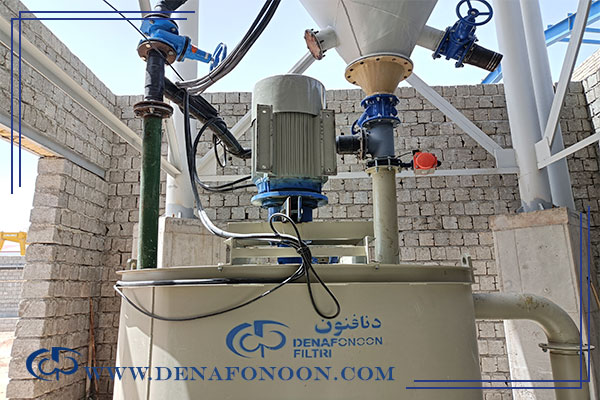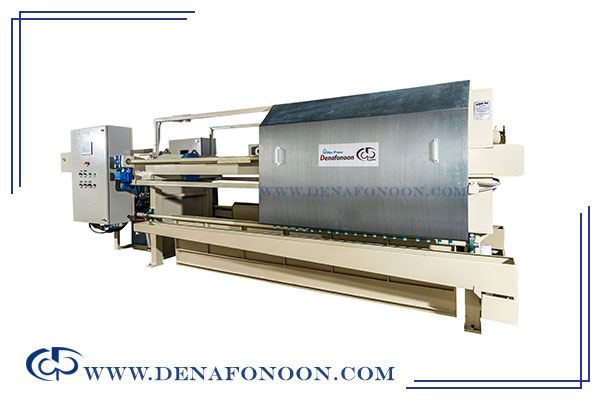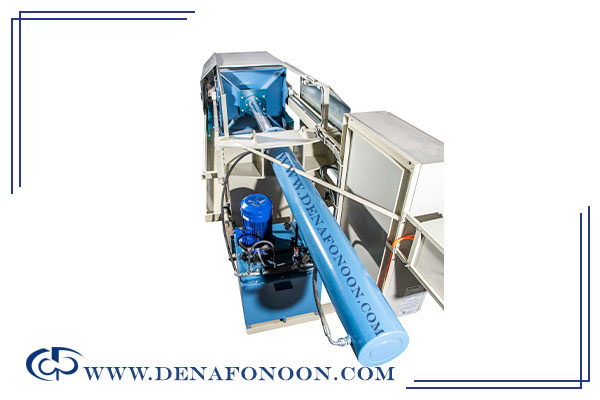Filter press working principle | How it works | animaiton
Filter press working principle
VisitCount 67
Filter press working principle
The filter press working principle invollves collecting wastewater behind the filter press plates, where the filter press pump directs it for dewatering. This process separates the liquid from the solids. Filter presses are commonly used to separate and dewater pulps that contain water or other liquids
The filter press operates by passing the dirty solution, which is essentially our wastewater, through a special filter cloth, which causes the solid particles to separate from the liquid. It’s important to note that there are various types of filter press cloths available, and the selection of the appropriate cloth depends on the type of pulp
By "type of pulp," we mean the size of the pulp particles, which can vary, and based on this, different cloths should be selected depending on the nature of the wastewater, The type of filter press cloth depends on the pulp material, the size of the pulp particles (in microns), and also the permeability of the cloth
Selecting the appropriate filter press fabric
One of the important factors in selecting the appropriate filter press cloth is considering a standard called D80. In fact, D80 indicates that 80% of the particles in the wastewater have a diameter of a few microns, This factor significantly affects the performance of the filter press
It is noteworthy that the determination of this standard is carried out through specialized and precise testing in accredited laboratories to accurately measure the particle size of the pulp, Based on the results of these tests, engineers are able to select the most suitable filter press cloth with characteristics optimized for enhancing the performance and efficiency of the system.
This process holds significant importance because choosing an inappropriate cloth can lead to reduced filtration efficiency, increased maintenance and repair costs, and even a shorter service life of the equipment.
Furthermore, considering the variety of materials and different working conditions of pulps, careful attention to the D80 standard ensures the quality of the output and improves productivity in filtration systems. Therefore, close collaboration between the engineering team and the client to accurately determine technical parameters and operational conditions is a fundamental step in providing optimal and reliable solutions.
D80 standard designation
Question: How can the particle size of pulp be determined?
To accurately determine the particle size of the pulp, a sample of the pulp or wastewater must be sent to accredited laboratories where specialized and advanced tests are conducted to identify the diameter of 80% of the particles. This standard, known as D80, provides essential information about the physical properties of the pulp to engineers and plays a decisive role in selecting the appropriate filter press cloth.
Denafonoon Company, utilizing equipped laboratories and an experienced engineering team, performs this process with high precision to provide the best filter press cloth tailored to the specific needs of each customer.
In addition to particle size, other characteristics also affect the dewatering process and the performance of the filter press. Some pulps are hydrophilic and difficult to dewater, while others are hydrophobic and release water more easily. Therefore, three main parameters must be considered when selecting the type of filter press cloth:
- Particle size of the pulp
- Concentration or amount of pulp
- Hydrophilic or hydrophobic nature of the particles
Alongside these factors, the size of the filter press plates is determined based on the type and volume of the pulp. Additionally, the dewatering cycle is a key factor influencing the optimization of system performance and equipment lifespan. The precise combination of these factors leads to the optimal selection of filter press cloth and the accurate design of the equipment.
:Filter press jack
The operation of the jack in a filter press involves a hydraulic jack installed behind the filter press plates, The force applied by the jack is carefully calculated according to the size and number of the filter press plates to securely hold the plates together and prevent them from accidentally opening, This force also prevents liquid splashing and material leakage during the filtration process.
In each filter press machine, the jack is designed to provide the specific force required to keep the plates tightly closed, When the jack is activated, the filter press plates move towards each other and come into close contact.
In this position, the edges of the plates align perfectly, and the filter cloths placed between them are properly positioned. This setup creates the ideal condition for continuing the filtration process and separating solids from liquids.
Accurate and optimal use of the jack in the filter press plays a key role in enhancing the machine’s efficiency, improving filtration quality, and increasing operational safety.
:Filter press pump

At this stage, the pump is activated and the pulp injection process begins. The pulp is introduced through the central inlet and flows between the filter press plates. At this point, the main driving force for pulp movement and circulation is provided by the pump, while the jack's function is solely to hold the plates tightly together.
The pump starts operating in a manner that allows its pressure to be adjusted based on the type of pulp, the hydraulic load required by the jack, and the specific characteristics of the filtration system. It is worth noting that the pump pressure is controlled by adjusting the motor speed. Typically, the operating pressure ranges from 3–4 bar at the initial stages and increases up to 10–12 bar toward the end of the filtration cycle.
During this process, the solid particles in the pulp are retained behind the filter cloths, while the water passes through the cloth and is discharged through the engineered outlet channels built into the filter plates. The plates remain in this position until dewatering is fully completed and the pulp is effectively drained of moisture.
Once the filtration phase is complete, the process continues in the following order:
- The pump is turned off
- The jack retracts to its original position and releases the plates
- The filter cake that has formed between the plates drops down as a single unit and is transferred to the next stage or cycle
This cycle repeats continuously, and the precise operation of each component plays a vital role in the efficiency, performance, and overall quality of the filtration system.
Estimating cake moisture per customer needs
The moisture content of the filter cake can vary depending on the customer's requirements, with dryness levels ranging from 12% to 30%. The longer the pump operates, the drier the sludge becomes. However, the final dryness level largely depends on the type of pulp used. If a higher degree of dryness is needed, after the pump is turned off and before the plates are separated, a significant amount of dry air should be introduced into the filter press to extract the remaining water from the sludge trapped between the plates. This method increases the dryness of the filter cake and is achievable with membrane filter presses.
In this process, the inlet for the sludge is closed, and the air inlet to the filter press is opened. Compressed air is then injected through the same path previously used for sludge entry. Although this procedure can be applied to all types of filter presses, it is most commonly used in lead and zinc filter presses where water recovery is critical.
For manual and pilot-scale filter presses:
- Closing the jack
- Starting the pump
- Controlling the amount of water entering the system
All these steps are done manually. In contrast, automatic filter presses perform these operations automatically. The PLC controls the sequence by first commanding the jack to fully close. Once the plates are firmly pressed, the PLC signals the pump to start. The dewatering process continues as long as water separates from the plates.
When dewatering is complete, control probes signal the system to stop the pump, after which the plates are opened, and vibration is applied to release the filter cake, In this article, we aimed to explain how a filter press operates.









